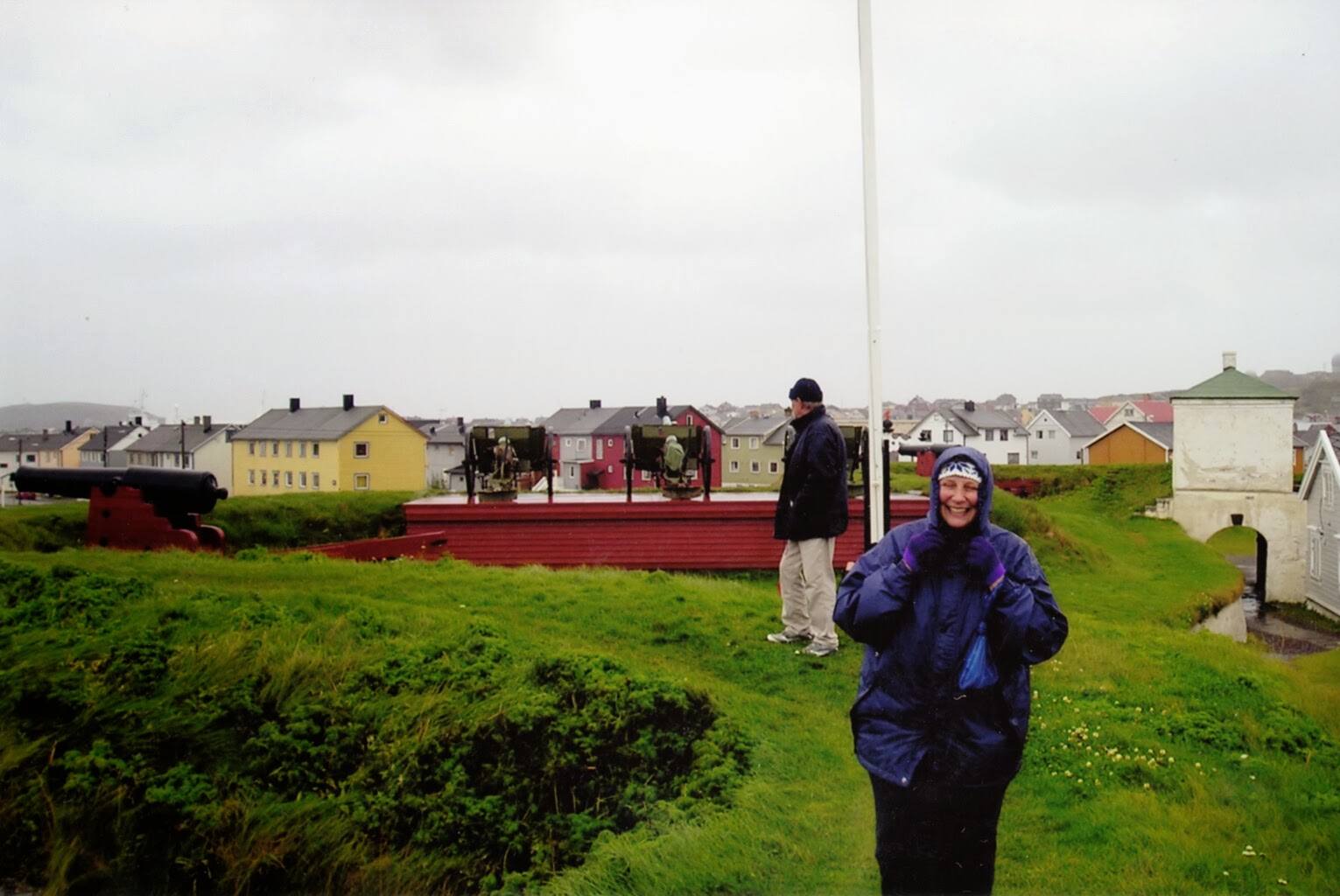Linda near the top of the world
Vardo, Norway - about the latitude of Barrow, Alaska
They fought heroically against the Germans in WW II.
But, in the end, they lost
In some parts of the world we Americans are the Great Satan. Elsewhere we are a bunch of buttinskis who meddle,
uninvited, in others' affairs. Almost
everywhere we are resented as the top dog, the rich guys, - the “1%” of the
world. Even where we do good works - and there are many instances - we are
disliked; as is well known, no good deed ever goes completely unpunished. In short, the rest of the world may admire us,
may envy us, may even try to emulate us– but they don’t much like us. How did this come to be?
I hit on these uncharacteristically gloomy, introspective
thoughts because I just ran on a passage in an old book which demonstrates how
much things have changed. The words I am
about to quote are taken from a book published in the 1870s, written by an talented,
exceedingly well educated, well-traveled, and well-heeled Englishwoman. The name of the book is A Thousand Miles up the Nile”. The
author is Amelia Blanford Edwards. Those
of you who have read some of the Amelia Peabody mysteries will recognize this
ladies’ character. So here goes:
“……Of all these, our
American cousins, ever helpful, ever cordial, are pleasantest to meet. Their flag stands to me for a host of brave
and generous and kindly associations. It
brings back memories of many lands and many faces. It calls up echoes of friendly voices, some
far distant, some, alas! silent. Wherefore
– be it on the Nile or on the Thames, or the high seas or among Syrian camping
grounds, or drooping listlessly from gloomy diplomatic haunts in continental
cities – my heart warms to the stars and stripes wherever I see them.”
Well, yes - this is
simply one woman’s opinion; no doubt there were equally well educated, well
traveled, well-heeled Englishwomen who felt otherwise. However, I feel certain that the global
proportion of Amelia Edwardses has diminished over the past 150 years. Clearly, acting as global cop has not helped
our popularity. Neither has involving
ourselves, often forcefully (and sometimes underhandedly) in the Middle East to
protect our energy supply. Just as clearly, we
should try to withdraw from places that hate us, by developing domestic sources
of whatever it is we need from them. Okay,
so here’s to fracking and shale oil, as well as renewable energy. Hooray for a nimbler and more potent
strategic strike force, and perhaps a smaller conventional army. Here’s to diplomacy, if it’s backed up by a
big stick. The day of Teddy Roosevelt is over, alas, and the day of an effective Barack Obama
is far, far in the future. In the meantime it would be nice if our
friends in Washington could manage to do their jobs.
Yeah, so now I will get back to another topic I know
virtually nothing about – cancer research.
My knee is healing rapidly and I will be in Borrego Spring
by the end of next month.







